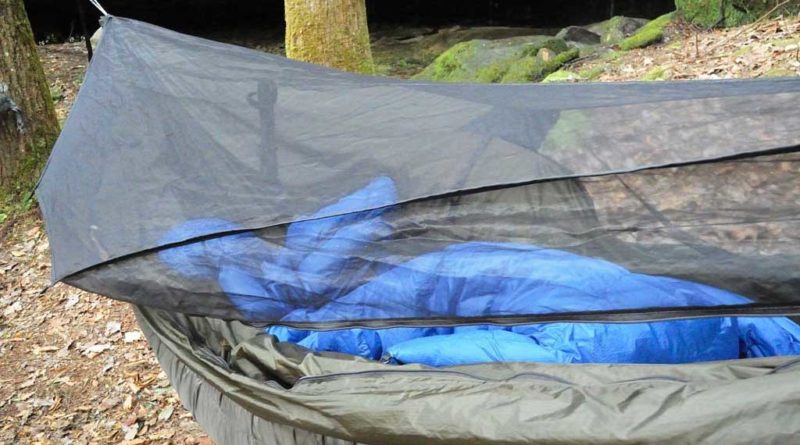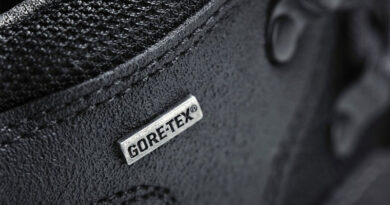Do You Need A Sleeping Bag In A Hammock?
A sleeping bag in a hammock is not required if the temperature is above 70°F. If the temperature is lower than that, you would need a sleeping bag and other insulation methods. You would want a sleeping bag during hammock camping, specifically during high winds.
Many campers love hammock camping due to sheer minimalism. But minimalism has its limitations and these limitations cause problems. A major challenge during hammock camping is to stay warm even in the summer.
A hammock alone is not enough to protect you from the elements. It is made of breathable material like nylon to keep you cool and dry. A hammock allows wind to pass through it, hence, we need insulation to stay warm.
Why use a sleeping bag?
Hammocks lack the necessary insulation by themselves to keep you warm all night. Sleeping bags are required to add that insulation to the hammock so that you can stay warm for a good night’s sleep. You need to choose a sleeping bag according to the conditions you are going to be in while hammock camping. Wind and precipitation make the weather much cooler.
What is a sleeping bag used for?
If you want a good night’s sleep in the wilderness, you need the proper gear to keep yourself insulated and warm. Sleeping bags are specifically made for the outdoors. They provide insulation and protection from the environment, hence, popular among the hiking community. The outer shell of a sleeping bag is made of durable polyester or nylon which is water-repellent. The sleeping bag fill is some soft textured material usually made of down or some synthetic material.
Types of Insulation
As I mentioned above, the fill is either made of down or some synthetic material. Both of these have their own ups and downs. The one you will choose will be based upon the situation you will be facing during camping like weather, terrain, and stuff. There are two types of insulation in sleeping bags; down and synthetic insulations.
Synthetic
Synthetic insulation is usually made of polyester fibers. It is affordable since polyester fibers are easy to manufacture. Synthetic insulation is also non-allergic. But the best thing about synthetic insulation is its ability to keep you dry even in damp conditions.
Polyester fibers repel water on their own. Synthetic insulation bags are fast-drying and they also retain their ability to keep warm even when damp. Due to these reasons, synthetic bags are almost always better than down sleeping bags in wet conditions.
Polyester fibers repel water and bags are fast-drying and they also retain their ability to keep warm even when damp. Due to these reasons, synthetic bags are almost always better than down sleeping bags in wet conditions.
But there are some downsides to having synthetic sleeping bags; they are heavy and don’t compare to down sleeping bags in terms of weight savings. They also wear down faster so you would be changing them often.
Down
Sleeping bags with down insulation are warmer than synthetic insulation. The way down insulation works is it contains air pockets within which makes it a bad conductor of heat. The heat from your body is unable to escape through and you stay warm throughout the night. This quality also makes down bags very compact and they can be packed a lot smaller.
However, down has an affinity for water and absorbs it quickly to become wet. When down becomes wet, it compresses and loses the internal air pockets resulting in the loss of its ability to insulate. Having an affinity for water means it is also harder to dry once it gets wet. It is best to apply water-resistant treatment to down bags if you are going to be in wet conditions.
Down is obtained from ducks and goose which makes it inherently expensive. This is another downside of down bags. Many brands take steps to monitor animal treatment which is either labeled as RDS (Responsible Down Standard) or TDS (global Traceable Down Standard). The details of these standards can be found online. Down bags also retain loft and warmth over the years making them a long-term investment.
Temperature Rating
Sleeping bags are rated for different temperatures. It is recommended that you choose a bag with a lower temperature rating than the lowest temperature you will have at the campsite since they can be unzipped if warm. There are three types of temperature ratings for sleeping bags:
| BAG TYPE | TEMPERATURE RATING (°F) |
|---|---|
| Summer Season | Between 30° to 40° or above 40° in some cases |
| 3-Season | 15° to 30° |
| Winter | 15° and lower |
Shapes
Sleeping bags come in many shapes to satisfy different kinds of needs for different types of people. The only way to be sure is to go inside a store and try them all to find the best shape that suits you. These are the following shapes that sleeping bags come in:
- Rectangular – Rectangular bags are one of the most common sleeping bag types. They have a lot of room to stretch arms and legs and they can be completely unzipped to form a comforter.
- Semi rectangular – This category covers a variety of shapes. It is also known as the “modified mummy” or the “barrel” shape. In this shape, you can find different levels of compromise between warmth and the room that you get inside.
- Mummy – This shape is the warmest and lightweight and it is specifically built for backpacking. However, this shape is not for you if you are claustrophobic due to its snug fit. The bag rolls with you rather than you inside it.
- Double Bags – Double bags are made for couples. Two rectangular bags of the same brand can also be zipped together to form double bags.
Conclusion
A sleeping bag is a necessary piece of gear for enjoying a good time outdoors. When it comes to hammock camping, you need a sleeping bag in all four seasons. For summer especially if you are camping in the northern locations, the nights can get pretty cold so it is always good to bring a lightweight bag even for a summer trip.




